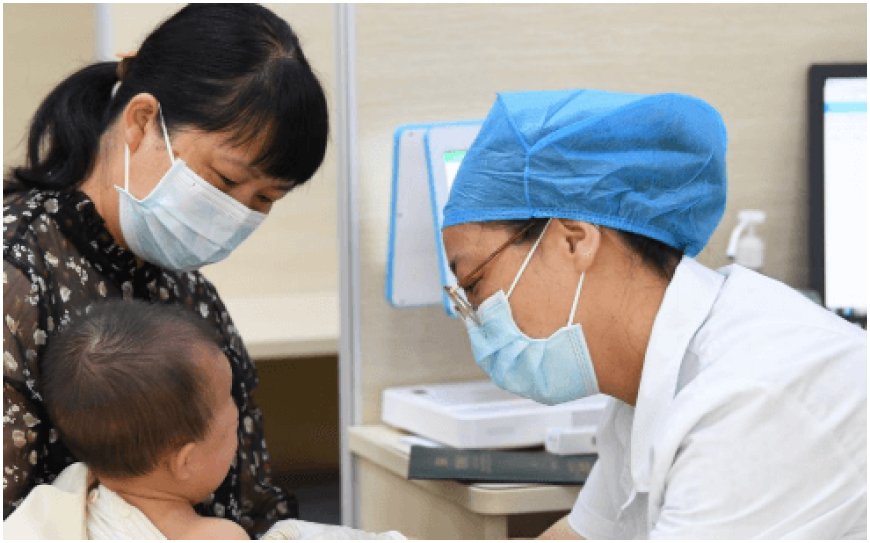Chickenpox Alerts Issued by Some UAE Schools as Doctors Push for Vaccination
Chickenpox Alerts Issued by Some UAE Schools as Doctors Push for Vaccination

Chickenpox, medically known as varicella, is a highly contagious disease caused by the varicella-zoster virus.
While it typically affects children and often presents with mild symptoms such as fever, fatigue, and an itchy rash, complications can arise, particularly in cases where children are not vaccinated. With a renewed wave of cases affecting certain schools, the health and education sectors are urging immediate preventive action.
In various educational institutions across the UAE, parents have received advisories warning of potential chickenpox exposures and asking them to monitor their children for symptoms. These advisories also recommend keeping symptomatic children at home and consulting healthcare professionals for further assessment. In some schools, temporary classroom closures or quarantine protocols have been implemented to limit the potential for widespread transmission. The situation has reignited conversations around immunization, especially among parents who may have delayed or skipped their child’s scheduled vaccines.
Doctors across the country have responded swiftly, urging families to verify their children's immunization records and make sure they are up to date with the recommended varicella vaccine. The vaccine, which is administered in two doses, is considered the most effective way to prevent chickenpox and reduce the severity of symptoms in breakthrough cases. The first dose is typically given at 12 to 15 months of age, with the second dose scheduled between the ages of four and six. Health professionals emphasize that receiving both doses is crucial for optimal protection.
In the UAE, the varicella vaccine is included in the list of mandatory immunizations for schoolchildren. The country has long maintained a strong national vaccination program, with efforts to eliminate preventable diseases through public awareness, mandatory school-entry requirements, and periodic health campaigns. Despite these measures, recent events suggest that gaps in vaccine coverage still exist, either due to missed appointments, parental hesitation, or lack of awareness about booster dose requirements.
Adding to the complexity of the current situation, some schools have also reported scattered cases of scarlet fever, another infectious disease that shares some overlapping symptoms with chickenpox, such as fever and rash. While scarlet fever is bacterial rather than viral and is treatable with antibiotics, the coexistence of both illnesses in school environments highlights the importance of vigilant monitoring, timely diagnosis, and swift public health response.
The resurgence of chickenpox cases is not entirely unexpected. Seasonal changes, particularly during warmer months, often correlate with an uptick in communicable diseases. Schools, by their very nature, are high-risk settings for such outbreaks. Children interact closely, share supplies, and participate in group activities, all of which facilitate the rapid spread of infections. In many cases, children are contagious before the characteristic rash appears, making it difficult to detect and isolate cases early enough to prevent transmission.
Health authorities have reinforced their commitment to controlling the situation by ramping up communication with schools and parents. Plans are underway to conduct additional vaccination drives, especially targeting the most affected age groups—typically five to six years old. These efforts are designed to reinforce herd immunity within schools and prevent further escalation of the outbreak.
Pediatricians and infectious disease specialists continue to underscore the safety and efficacy of the varicella vaccine. While some parents express concerns about vaccine side effects or the belief that chickenpox is a mild illness not warranting vaccination, experts caution against complacency. In some instances, chickenpox can lead to complications such as bacterial infections of the skin, pneumonia, or encephalitis. Hospitalizations, though rare, do occur—especially among infants, adolescents, adults, and individuals with compromised immune systems.
Public health messaging has focused on reassuring families that side effects from the vaccine are generally mild and short-lived, such as redness or soreness at the injection site, or a low-grade fever. These are far outweighed by the benefits of immunity and the reduced risk of transmission within communities. Health professionals have also noted that children who receive both doses of the vaccine have a significantly lower chance of contracting the illness, and if they do, symptoms are usually less severe and shorter in duration.
What's Your Reaction?









































